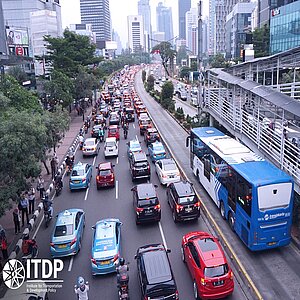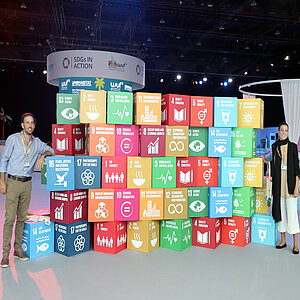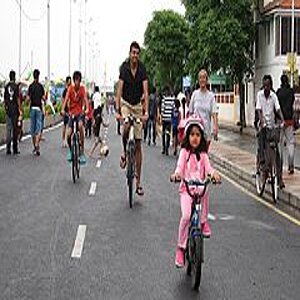The need for sustainable mobility in India

ITDP is committed to sustainable transport and urban development worldwide. In this interview, Aswathy Dilip reports on the Complete Streets programme in India.
All over the world, more and more people are moving to the cities. As cities grow, so do the challenges for designing sustainable transport. The non-governmental organisation Institute for Transportation and Development Policy (ITDP) promotes sustainable, equitable, and inclusive transportation and urban development by technically supporting decision-makers in cities worldwide. With its work, the NGO contributes not only to environmental and climate protection but to a better quality of life in cities. We spoke to Aswathy Dilip, an architect and urban designer, leading the ITDP programme on "Complete Streets" in India, about how this works in practice - and what benefits Complete Streets can offer even in times of the Covid 19 pandemic.
If we travel ten or 15 years into the future, how do you envision sustainable urban mobility in India?
Aswathy Dilip: When I think about the future, I see cities brimming with life — children playing on wide and safe sidewalks; women confidently accessing opportunities, as walking is comfortable, cycling is chic and the buses are reliable; and the physically challenged accessing public transport seamlessly from their homes, feeling included in the society.
Can you describe to us, how the traffic in Indian cities looks like in reality?
Indian cities look great on paper: On average, two-thirds of the country’s urban population rely on walking, cycling and public transport, and the rest use private motor vehicles. However, in reality, the experience of commuting in each of these modes is not as equitable as the numbers reflect. There are little to no footpaths or cycling tracks. Public transport is overcrowded, unreliable, and poorly financed. With more and more infrastructure built for the private car, automobile sales are on a constant rise. Finally, the parks in our cities are disappearing as parking gets top priority, whether on street or off. As a result, Indian cities like Delhi and Mumbai, lead the world in pollution and congestion, and those who get affected the most are the ones who contribute to it the least — the two-thirds who walk, cycle or use public transport. This must change.
This is where ITDP's work and the "Complete Streets approach" comes in. Can you give us more details about that?
ITDP aims to fix the imbalance. We help cities create better streets to facilitate walking and cycling; build safe, modern, efficient, and integrated public transport systems, accessible to all; plan inclusive and compact mixed-use neighbourhoods; as well as adopt stringent measures to dissuade private motor vehicle usage and curb congestion. Our Complete Streets programme focuses on the first — to build streets that facilitate walking, cycling and provide access to public transport for all users.
The Indian Government started the Smart Cities Mission a few years ago. How does your work fit into this programme?
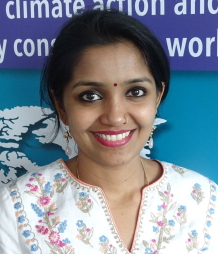 The national Smart Cities Mission, launched 5 years ago, encourages the 100 chosen cities to promote walking and cycling amongst other objectives. As a part of our work under the IKI-supported India Sustainable Mobility Initiative, ITDP India Programme created the Complete Streets Framework Toolkit that provides step-by-step guidance to all cities in envisioning, planning, designing, implementing, and monitoring vibrant and lively streets. In 2019, The Smart Cities Mission adopted this toolkit, thereby giving every city not only a vision but also a guide to creating better streets, better cities, and better lives. Currently we are working with the Mission to build capacity of officials to implement COVID-safe transport solutions across the country through a webinar series called “Urbanlogue”.
The national Smart Cities Mission, launched 5 years ago, encourages the 100 chosen cities to promote walking and cycling amongst other objectives. As a part of our work under the IKI-supported India Sustainable Mobility Initiative, ITDP India Programme created the Complete Streets Framework Toolkit that provides step-by-step guidance to all cities in envisioning, planning, designing, implementing, and monitoring vibrant and lively streets. In 2019, The Smart Cities Mission adopted this toolkit, thereby giving every city not only a vision but also a guide to creating better streets, better cities, and better lives. Currently we are working with the Mission to build capacity of officials to implement COVID-safe transport solutions across the country through a webinar series called “Urbanlogue”.
Best practice is an important clue - how are the cities in India changing? Is the change already visible on the streets?
The cities of Chennai and Pune, for example, have redesigned around 200 km of streets and aim to expand further in the coming year. Last year, Chennai inaugurated the Pondy Bazaar pedestrian plaza project — a redesign of the cultural shopping hub in the city that reclaimed more than 50% of the road space for walking, cycling and other active uses. The project transformed a congested area into a vibrant centre, and garnered the support of the public and the political leadership for pedestrianisation projects. Chennai now aims to transform an additional 800 km of streets across the city and has inspired the state of Tamil Nadu to expand the Complete Streets initiative to ten more cities.
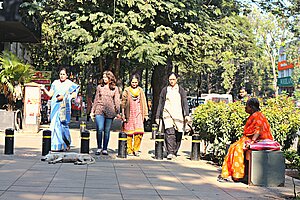
What does sustainable mobility mean in times of the COVID-19-pandemic?
It is important to highlight that all these initiatives will also improve resilience of Pune and Chennai to crises like the COVID-19 pandemic. The Complete Streets work in Pune has resulted in the city having one of the best cycling infrastructure in the country — giving the city’s residents the opportunity to embrace cycling, a safe and sustainable personalised mode of transport. Similarly, as social distancing continues even as we relax the lockdown, pedestrians and shoppers will not have to negotiate for space in areas like Pondy Bazaar pedestrian plaza.
Can you talk about your work in transforming public transportation in cities?
When building a sustainable vision, we successfully urge cities to think of walking and cycling in tandem with public transport. Pune, for example, is planning to double its fleet and is focusing on electric buses. With cities under lockdown and social distancing enforced due to the COVID-19 crisis, buses and metros have seen a big drop in ridership, worsening their existing financial woes. Going forward, our work will be crucial to ensure that the public transport system recovers post-lockdown, and is adequately supported and funded by the state and city agencies.
What are the current tasks and challenges for your work on sustainable mobility in Indian cities?
The COVID-19 pandemic will change cities forever. The lockdown has affected the marginalised and vulnerable sections the most and this will continue once the impending recession hits. Walking, cycling and public transport will play an important role in providing affordable access to opportunities, healthcare and other essentials.
People may hesitate to travel in mass transit once the lockdown lifts. However, a fully functioning public transport is vital even after the lockdown lifts and must be supported financially by the government. Trends across the world and India show an increase in cycling activity, but there is little to no cycling infrastructure in the country and this must change. Finally, the fear of overcrowding could result in more private motor vehicle trips, threatening any progress towards sustainability. The focus must be to think long-term, learn from our past failings, and build cities that are resilient, unpolluted, uncongested, and equitable for all.
The link has been copied to the clipboard
Contact
IKI Office
Zukunft – Umwelt – Gesellschaft (ZUG) gGmbH
Stresemannstraße 69-71
10963 Berlin
View ITDP´s videos
Aswathy Dilip on the child-friendly pedestrian plaza in Chennai



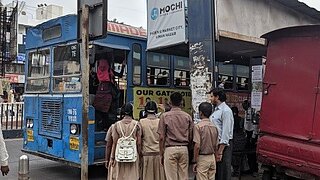
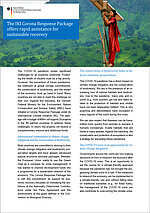
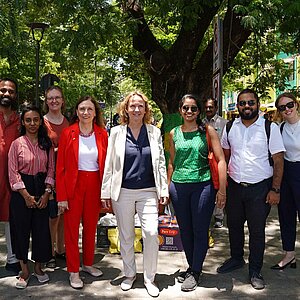
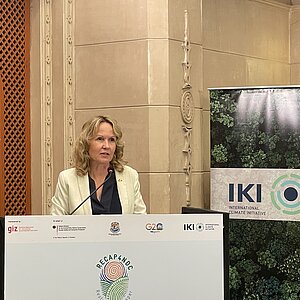
![[Translate to English:]](/legacy/_processed_/5/5/csm_Indien_EE_Solar_Frau_bfcf99c425.jpg)
